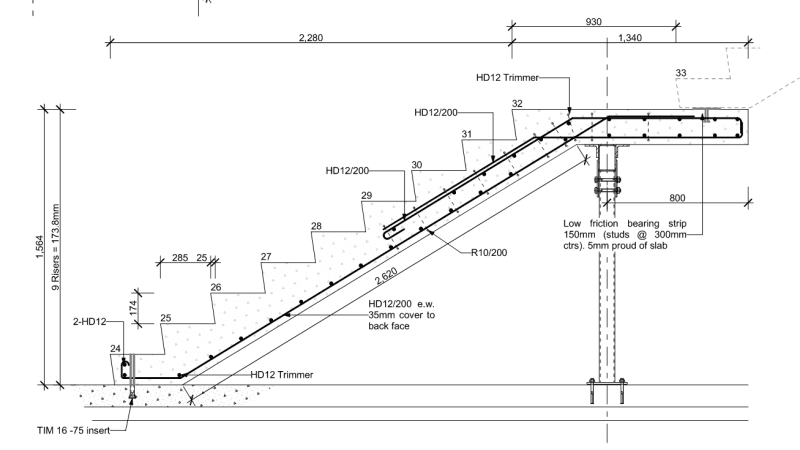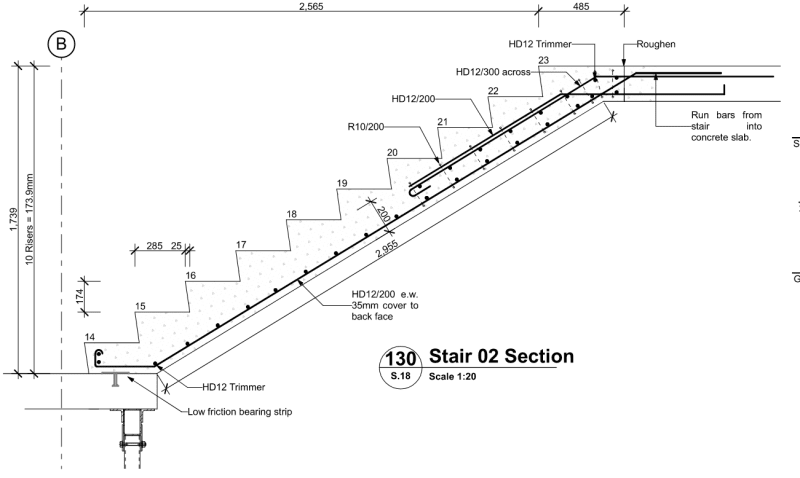driftLimiter
Structural
I've been wrestling with a particular code provision regarding egress stairs for a while now.
The in Ch 13, ASCE 7 gives two options for anchoring stairs to the main building:
Provide a slip connection.
Or
Rigidly tie in the stairs.
They also provide the required anchorage forces in Ch 13 (Fp).
The way I see it if you provide a slip connection, then you aren't able to resist the required Fp loads until all of the slip is taken up.
If rigid tie in, it says that the stair framing must be included in the MSFRS, in practice I have never seen this done.
Most of the time the EOR says anchor per chapter 13 and provide slip connection capable of 0.02 x Hsx displacement.
So the only feasible option I see is to provide a slip connection with a keeper system capable of resisting Fp.
Does anyone else have an opinion or references that can help clarify this?!
The in Ch 13, ASCE 7 gives two options for anchoring stairs to the main building:
Provide a slip connection.
Or
Rigidly tie in the stairs.
They also provide the required anchorage forces in Ch 13 (Fp).
The way I see it if you provide a slip connection, then you aren't able to resist the required Fp loads until all of the slip is taken up.
If rigid tie in, it says that the stair framing must be included in the MSFRS, in practice I have never seen this done.
Most of the time the EOR says anchor per chapter 13 and provide slip connection capable of 0.02 x Hsx displacement.
So the only feasible option I see is to provide a slip connection with a keeper system capable of resisting Fp.
Does anyone else have an opinion or references that can help clarify this?!


